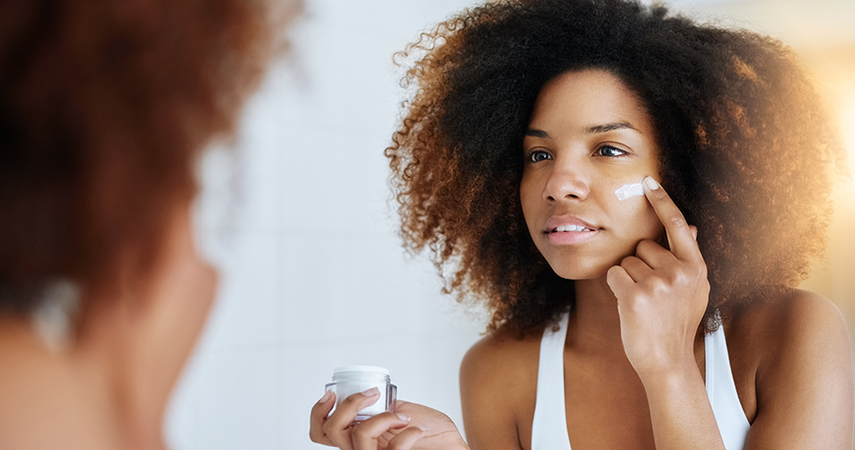Makeup primer has exploded in popularity in recent years. While it used to be reserved for the experts, it’s a product that has visible impact on how your base makeup looks and wears throughout the day.
After you’ve answered the question about what is makeup primer, you have to find the right one for you. The good thing is, there truly is a primer out there to help every type of skin complaint.
Foundation primer does exactly what the name suggests—it primes, or prepares your skin, for products to go on after it. It’s usually not a visible or tinted product, so it’s hard to see the difference if you use it on its own.
Consider makeup primer a bridging product, a cross between skincare and makeup in both concept and in practice.
Primers are usually packaged in a tube and have a cream or lotion formula, just like a moisturizer.
Make Your Makeup Last Longer
Many women resort to carrying around a compact foundation in their purse, or blotting with napkins or blotting paper. You might be reapplying powder again and again to get your makeup to last the distance.
These methods are band-aids rather than solutions. They can make your makeup look caked on and heavy by the end of the day.
Primer is applied after your skincare, but before any foundation or color cosmetics. It helps bind your base makeup to your skin so it lasts longer.
A good primer will boost the wear time of your foundation by at least a couple of hours. You can look as good leaving the office at 5pm as you did when you arrived at 9.
There’s no trick to applying a primer. Treat it like you would a moisturizer, applying it all over your face. Give it a moment to absorb before applying your foundation right over the top.
Alternatively, if you’re using a primer to target individual skin complaints like oiliness or redness, you can mix and match and use several primers, applied only in the spots where you need them.
Hydrating Primers
Most primers are hydrating, in some sense, but many are specially designed for dry skin types.
If your skin feels parched and desperate for moisturizer after you cleanse, or if you notice dry, flaky or patchy areas of foundation throughout the day, try introducing a hydrating primer to your routine. It will boost the effects of your moisturizer and keep skin your looking fresh and plump.
Mattifying Primers
At the other end of the spectrum are primers made for oily skinned women. Now, having oily skin isn’t as much of a downer as you might think. It can actually mean your skin stays looking young for longer. Women with oilier skin don’t notice fine lines and wrinkles wrinkles forming as early as their dry-skinned friends.
That’s not to say having oily skin is a fun time, though. Excess oil can make your foundation almost swim on top of your skin, and prone to smudging or transferring when touched. It’s also just not very hot to look that shiny!
Mattifying primers help dial down that oil production and banish the oil slick look in your T-zone. They’re almost like a powder layer beneath your foundation—working double time to minimize oil production and soaking up any excess to keep skin looking matte throughout the day, and hold that foundation in place.
Smoothing Primers
Hand-in-hand with mattifying primers are smoothing primers. You can tell a smoothing primer by its feel—swipe some on the back of your hand and notice the texture is instantly improved and your fingers will glide across the area where the product is applied.
Smoothing primers are beneficial for women with visible pores and texture on their skin, whether that’s from acne scarring or even fine lines that are starting to develop.
Of course, you’re never going to smooth out everything, but a primer can go a long way to at least creating the illusion of even, youthful skin. It’s like gap-filler—in fact beauty brand Laura Geller’s smoothing primer is even called Spackle!
Brightening Primers
All the categories of primer I’ve covered so far address skin concerns. There are also foundation primers that fall closer to the makeup side of the fence. With the highlighting trend that’s taken over the beauty world lately has come an increase in brightening or highlighting primers.
Don’t be intimidated by the idea that a highlighting primer might make your face look like a light bulb—in fact, brightening primers are the most subtle way to introduce a bit of glow to your daily face.
They usually have a very fine amount of reflective pigment in the formula, which, when spread across the skin, imparts a delicate radiant lightness to the skin. Applying foundation over the top moderates the glow so you just end up looking healthy, not shiny.
If you’re not sure where to start with primers, or which primer to choose, look for a primer made by the same company as your favorite foundation or base product. The formula will be developed with the foundation in mind, so you can guarantee that they’ll play well together.
Hopefully we’ve answered the question about what is makeup primer, and given you some tips on which one is best for you.
